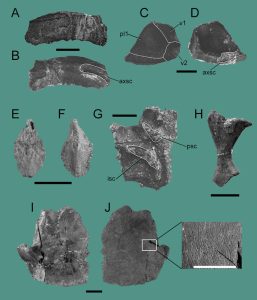
Gars (Lepisosteidae)
Gars (Lepisosteidae) are an extant family of actinopterygian fishes, living exclusively on the western hemisphere…

These turtles are poorly known and only represented by characteristic isolated shell elements. However, they are more common than the remains of Kallokibotion. Dortokids are another enigmatic group with poorly known position on the turtle family tree, unfortunately only known by their shells and not a single species from the skull. All we know that they belonged to side-neck turtles but their relationships with living groups or the extinct bothremyidids (including Foxemys trabanti) are uncertain. This is an endemic group to Europe and besides Iharkút they have also been reported from various Late Cretaceous sites in Romania, France and Spain. In Romania one lineage also survived the mass extinction that eradicated all non-avian dinosaurs at the end of the Cretaceous and only went extinct in the Eocene. Judging from their shell, dortokids were small to midsized aquatic turtles and their general appearance resembles living chelid turtles in South America and Australia. The species from Hungary is still not described but preliminary studies indicate that it is very similar to a geologically younger species in Romania and more distantly related to the species from Western Europe.

Gars (Lepisosteidae) are an extant family of actinopterygian fishes, living exclusively on the western hemisphere…

These turtles are poorly known and only represented by characteristic isolated shell elements. However, they are more common than the remains of Kallokibotion…

Similarly to Doratodon, this small crocodilian is very rare at Iharkút and its presence has been only identified in the last few years…

These 4-5 meter long dinosaurs were the top-predators of the Iharkút land during the Late Cretacoeus…